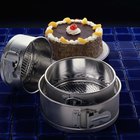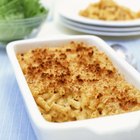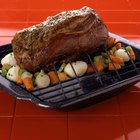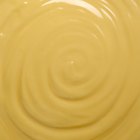
Foil is not always needed for baking, but when it comes to lasagna, you don't want to pass on this valuable necessity. While foil does not necessarily help to cook the lasagna quicker, it helps to lock in moisture throughout the lasagna's long stay in the oven and ensure that it is not dried out when finished. Remove the foil at the end of cooking to produce a wonderfully darkened top, but be sure you reach for the foil to get your lasagna off to a good start in the oven.
The Lasagna-Foil Connection
Foil is important to the cooking process of lasagna as well as other casserole-like dishes. While it does not necessary speed up the cooking process, it does assist the getting the temperature high enough to get the sauce boiling and cook the lasagna while not allowing the valuable moisture to escape and dry out the dish. A typical meat or vegetable lasagna does best in an oven set to 375 degrees Fahrenheit, covered with foil for about 20 minutes, followed by 20 minutes with the foil removed to allow the top to brown.
No-Boil Noodles and Foil
When using no-boil noodles, it is especially important that you top your lasagna with foil to ensure that your lasagna comes out of the oven cooked to perfection. No-boil noodles need the moisture of the sauce that they are cooked in to really turn out well in lasagna. By covering the lasagna until the sauce begins to boil, you are giving the noodles a chance to soften and cook before the top comes off and the sauce thickens with evaporation.
Classic Lasagna and Foil Cooking
Making a classic lasagna with boiled noodles typically uses less liquid ingredients than one that has no-boil noodles. However, it is just as important to cover your dish with foil when making this type of lasagna, since boiled noodles can revert back to a hardened state when cooked at high temperatures. Seal in the tomato or bechamel flavor of your lasagna by topping it with foil until the last 20 minutes of cooking.
Lasagna Tips
Making a great lasagna is an easy, yet time-consuming process. Split up the job by prepping meat and cheese mixtures up to two days in advance and storing them in the refrigerator until you are ready to assemble the lasagna. While the typical American lasagna consists of meats, tomato and cheese, don't overlook other types of traditional Italian lasagnas, like spinach lasagna or spinach prosciutto lasagna with a bechamel sauce made from butter, milk and flour.
Related Articles

How to Make Lasagna Pie in a Springform ...

Baked Pasta With Cottage Cheese

How Many Calories are in Cheese Lasagna?

How to Make Cottage Cheese Lasagna
Easy Baked Ziti Recipe

How to Give Flavor to Steamed Broccoli

How to Prevent Cheese Separation in ...

The Difference Between No-Boil & ...

How to Make Homemade Mac & Cheese

How to Bake Sicilian Ziti

How to Freeze Stromboli

How to Make Mac & Cheese Using Alfredo ...

Can I Make Baked Macaroni & Cheese With ...

How Long Can You Refrigerate Nacho ...

How to Cook a Whole Sirloin Tip Beef ...

How to Cook Lasagna Noodles so They ...

How Long Does It Take for Asparagus to ...

Do I Need to Cook Broccoli Before I Put ...

Non-Traditional Ideas for Cooking With ...

How to Cook a Cheese Sauce for Cabbage ...
References
- The New Best Recipe; America's Test Kitchen
Writer Bio
Based in Portland, Ore., Maxine Wallace is a writer with more than 12 years of experience. With a bachelor's degree in journalism and experience working on marketing campaigns for large media agencies, she is well-versed in multiple industries including the Internet, cooking, gardening, health, fitness, travel and holistic living.
Photo Credits
Jupiterimages/Stockbyte/Getty Images